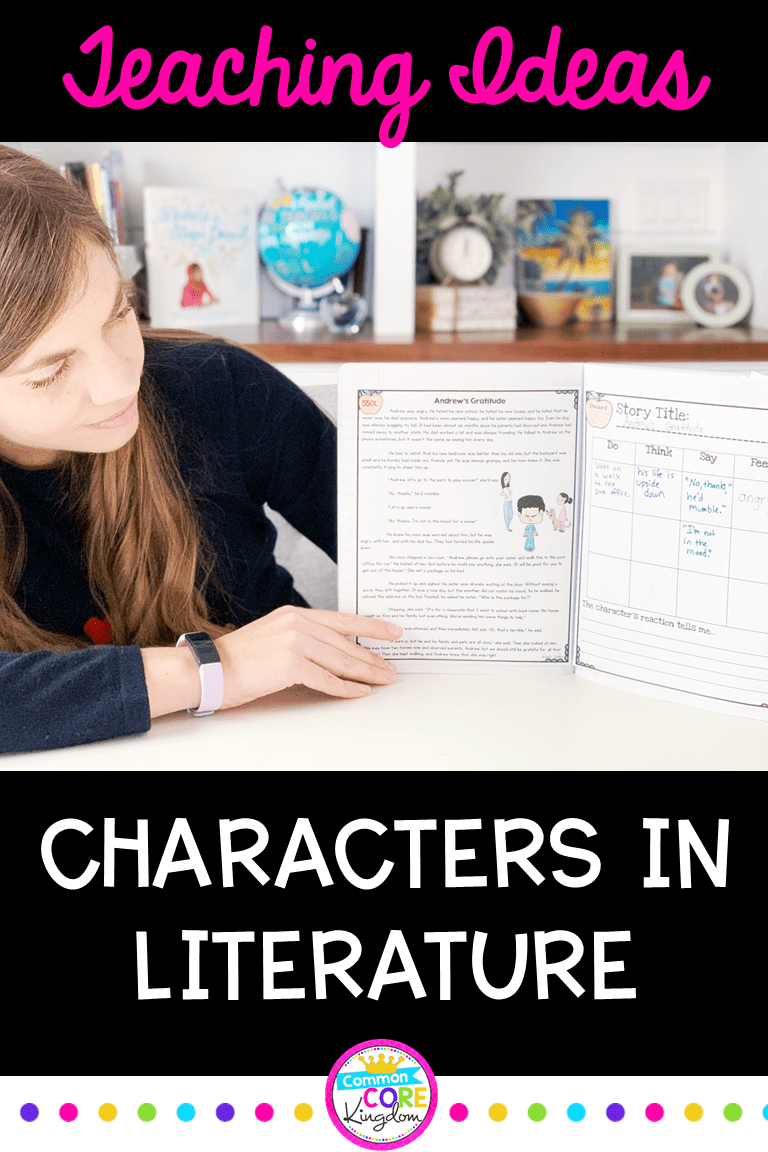I LOVE teaching about characters in literature. There are so many excellent mentor texts that help students learn about character traits and character change. Teaching about characters is also a great opportunity to incorporate diverse characters and character education. Here are some tips and strategies for how to teach characters in literature skills effectively.
Here are my favorite read alouds to use when teaching about characters in literature:
Mary Wears What She Wants by Kevin Negley
Malala’s Magic Pencil by Malala Yousafzai
Ron’s Big Mission by Corinne J. Naden
Let’s start by looking at how these skills fit into the standards:
It is important to teach students about what the character says, does, thinks and feels in response to a problem.
To do this, select a read-aloud of your choice. As you present the text:
Another important skill to teach students is identifying character traits. Identifying character traits will help students understand and explain how a character changes.
To do this, I like to provide students a list of character traits in their journals. Students then use this list to identify what traits apply to their character and how the character changes throughout the story.
As always, I recommend using a Gradual Release or Workshop model to teach about characters.
When teaching about characters in literature, it is important to utilize a wide range of resources. That’s why I created a wide range of resources specifically focused on Characters in Literature.
I like to begin teaching about characters using mentor texts as read alouds. My 2nd and 3rd grade Mentor Text Units contain skill-focused lessons that integrate popular mentor texts.
Once students gain some exposure to this skill using literature, I think it is beneficial to incorporate passages. Passages help teachers and students because they provide an opportunity for students to mark up the text to really dive into text evidence strategies. You can read more about my strategies for teaching with passages.
My Core Comprehension™ passage units are great because they have certified Lexile levels, making differentiation and scaffolding easy. The corresponding questions are skill focused and written to help students progress characters in literature skills, while also requiring students to use text evidence with color coding.
I also incorporate reading task cards into centers to provide extra practice for students who are more independent. Task cards can also be a quick warm up for whole class or strategy group instruction. There are really so many different ways you can use task cards. You can read more ideas about how to use task cards in the classroom.
If you are looking for some great resources to use when teaching about characters in literature, I have a wide variety in my store from task cards, mentor text units, passages, and interactive notebooks.

We strive to create resources that empower teachers and transform student success. We create skill-focused resources that promote critical thinking, enhance student engagement, and incorporate diversity. Our goal is to develop the tools teachers need to reach their students and foster a lifetime of learning.

